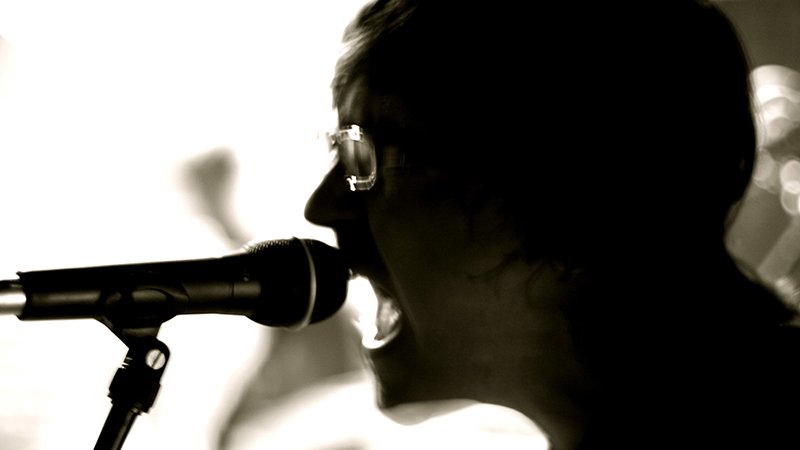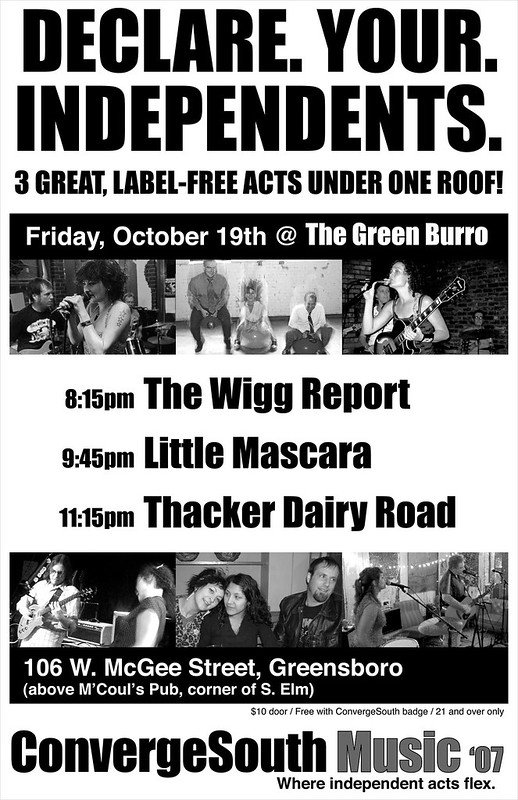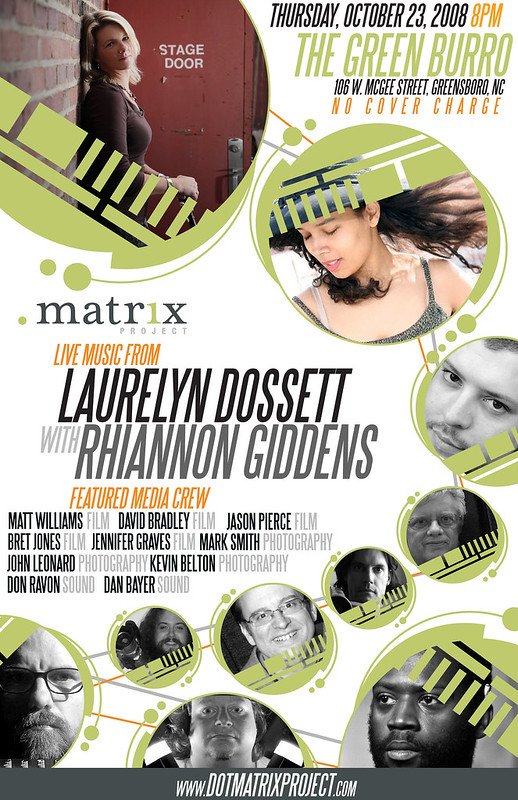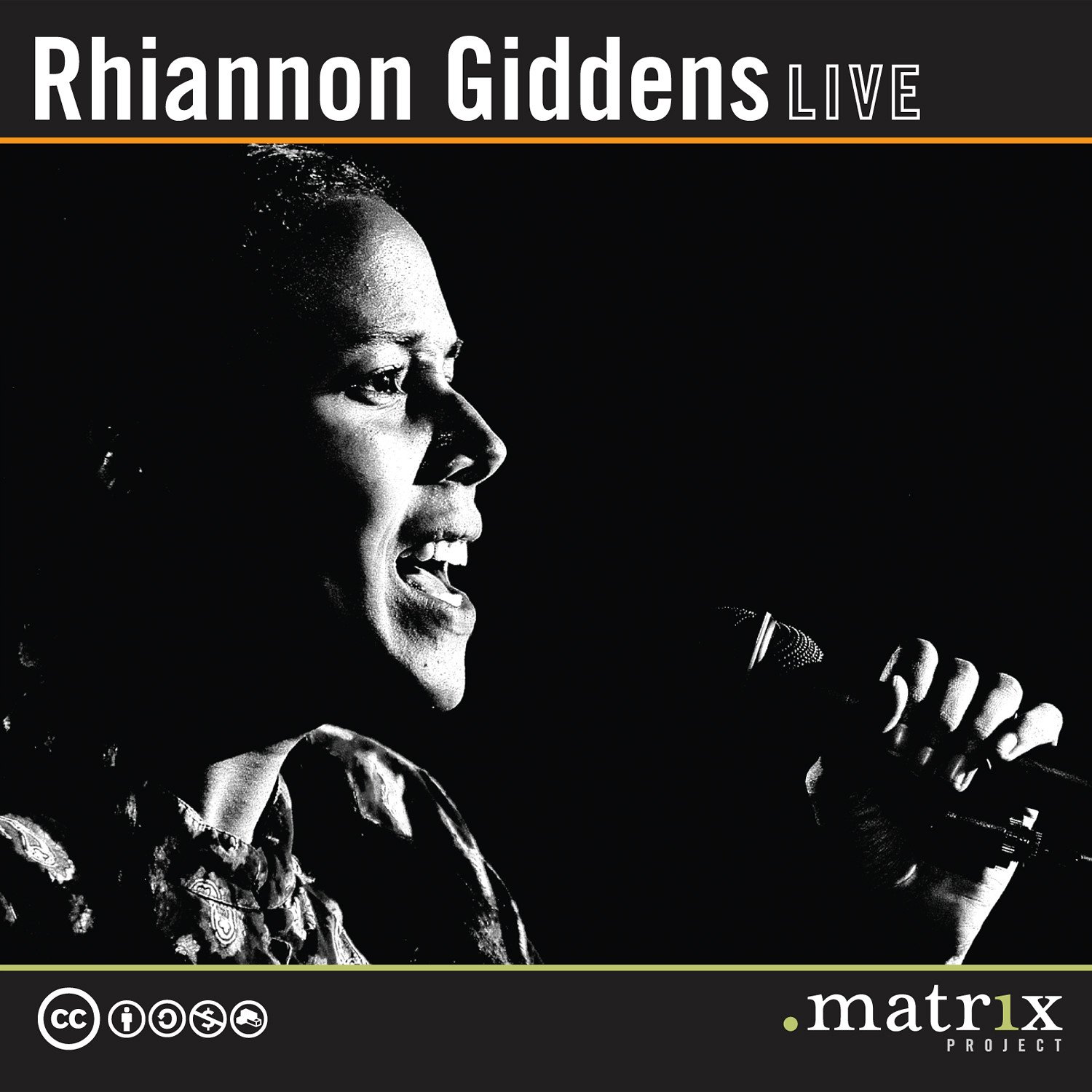
In mid-2007 I had a front row seat to the state of the music industry not on the Billboard Top 100, my iPod, or America’s Got Talent.
A couple of nights a week I would take in my singer-songwriter girlfriend mesmerizing a crowd with playful lyrics and her bluesy voice — all while struggling to make ends meet as a musician.
She adored performing, collaborating with bandmates, and she thrived off the energy of the crowd, so she didn’t complain much about the pragmatic realties of working full-time and playing gigs, but I saw how the grind was wearing her down. ~75% of her shows were in wine bars, public spaces, or a shared room in a bar with The Beard and Mustache Club.
Those nights seeded my mind with the desire to solve this market problem, and as mid-thirties boyfriends tend to do, I leaned into trying to fix things that were out of my control.
Fertile Fields
I had been recently tapped to produce and promote the music event for ConvergeSouth — Greensboro’s attempt to capture lightning in a bottle as SXSW did for Austin, TX. Being the 'internet cowboy' in town — a moniker this yankee was given by a local journalist — I ideated beyond this particular show to how we might promote artists novel social media, such as Facebook. After collaborating with Chris Messina the previous year, it seemed like a safe bet that the future was going to be steeped in tags.
My brother, Andy Coon — an award winning documentarian — helped me document the show and edit videos for each band. Andy was also busy producing the innaugural ConvergeSouth Film Festival, and received an array of great submissions, though disappointingly, the vast majority were from outside our region.

Historically, Greensboro has always been a vibrant home for creative folks, though situated throughout moderate conservatism in the suburbs. There are rich studio arts communities and until just this year, high quality theater. A diverse underground music scene ran from house shows to gigs at pizza shops, while a number of venues have storied histories putting on epic regional acts.
Similarly, a relatively large indie filmmaker community has contributed to the culture, producing high quality projects, such as work from Monkeywhale and Beat Down Boogie. And once a year pro, indie, and amateur filmmakers alike come together to pump out slick shorts for the 48 Hour Film Festival.
Yet the most progressive city in North Carolina — a college town with 50,000+ seasonal students and more than 200,000 full-time residents — sustainable investments in the arts hasn't been a priority for folks.
Local artists were quick to share their frustration by such laissez faire patronage of their talents. I saw this as an opportunity to introduce our khaki and pastel laden suburban neighbors to experience a rich array of local talent by intersecting these disparate artistic communities in a novel way.
My gray matter noodled something like the following…
“What might happen if I were to create a brand around a free monthly show featuring two local acts playing original music while local photographers, filmmakers, and sound engineers document the evening in a live studio setting.
If we were to then copyright media under a free to use Creative Commons license, making everything available online — live albums, music videos, and photography — might we be able to create a flywheel affect between Greensboro’s creative scene, downtown businesses, social media, and residents of the 336?
And with only produced one show under my belt, it began.
the .matrix project

Over the next 3+ years, I worked with hundreds of the most talented people you could imagine meeting.
Musicians of all sorts reached out to me to get on — from unknown acts looking for a break to veterans like Jim Avett and his two accomplished sons sitting in to provide backup vocals. Just as suprising to me, everyone from weekend warrior ‘shooters’ to award winning editors and cinematographers signed up to contribute to the cause.
The sell to everyone was one and the same: we’re doing this to expose the creative talent of Greensboro, which meant anyone who applied their trade for the project.
There was only one constraint: no money involved.
A few interested parties wavered, and one turned down the opportunity because they wanted to get paid, but the vast majority of folks viewed DMP as a service to the local arts community and were drawn by the free press, professional grade recordings, and laid back space shared with other creative types.
Aside from my relatively sizable investment in professional stage and recording equipment, money stayed in pockets.
Creating the Value Matrix
The FREE. LIVE. MUSIC. barter went something like this:
Performing musicians received a professional grade master recording of their set to do with as they liked, a music video of their song of choice, and a stack of quality photographs of the show + access to a media community of 50+ to develop relationships.
Rotating filmmakers could deeply collaborate with the musicians — some of which were known quantities. They'd gain experience managing the room when shooting, edit with direct input from the band, and receive high quality audio from our engineers. I posted videos to our Youtube and Vimeo channels, and the owner of a local theater agreed to feature DMP music videos before movies for at least a year.
Rotating photographers would have their best shot chosen for the live album cover, their work used in promotional material around town and online with full attribution, and become featured in our annual photo exhibit which was graciously covered by the local papers.


Sound engineers and co-music directors, Dan Bayer and Don Ravonne, individually mic'ed the stage, operated the sound board, mixed down the recording, and collaborating with the musicians on their preferred live sound, gaining priceless experience as show and studio engineers. This was a real resume piece.
Graphic artist, Justin Reich, designed the primary poster to emphasize the community aspect of the project, along with a handful of submissions from people in the DMP community that augmented our coverage online, on telephone poles, in Yes! Weekly, etc. These people did it purely for the love of the community.
The Green Burro, our primary venue, contributed their back bar at no cost, as long as our emcees would keep reminding the audience to grab a drink and tip their bartenders.
As I bounced between venue negotioations, radio show promotions, creative direction of show and marketing material, etc. a volunteer collective came together and took on a life of its own.
It was a magical time.
As the executive producer, my goal wasn't to create barriers to entry. Yes, I wanted quality shows, but I prioritized giving opportunities to completely unkown acts, as shining a light on them were the whole reason behind the project. I booked more popular artists here and there so that attendence would grow and hopefully buzz might push online discovery of show media.
I also prioritized booking a wide range of genres, to bring in a diversity of audience from across Greensoboro, and eventually the state.
I found this diversity to be the coolest part of the experience.
One show was designed as a listening room complete with folding chairs and emcee prompts to listen to the sonic goodness of local legend, Laurelyn Dossett, and the Grammy award winning lead singer of the Carolina Chocolate Drops (and Greensboro native) Rhiannon Giddens.
Just months earlier, we had a punk rock show featuring the local bands, The Leeves & Queen Anne's revenge followed by a hip hop and spoken word show with Universal Mathematics and Mr. Rozzi.
All of the bands were great to work with, and some truly made the day. When we were attempting to promote our first show, not many familiar acts were willing to buy into the vision, but Saddle Creek Records' Sorry About Dresden immediately threw their hat into the ring to make sure we came off as legit.
We were becoming a pillar in the downtown scene and community, lifting as many boats as we could in the process.
Tim Lafoyette, lead singer of Decoration Ghost, bravely fought ALS for a number of years. His story was documented in my brother's web series, Often Awesome, and we reached out to him to play the show just months after his diagnosis, prior to his neurodegenerative disease taking away his ability to walk independently. The following year, we teamed up with the Often Awesome army, his care givers, to hold a benefit concert in his name.
As the shows began to stack, I'd notice past players and media folks showing up to support the latest bands, and online, I'd witness musicians connecting with photographers to work future gigs.
The cross polination of talent and fans was introducing collaborative possibilities left and right, and residents were beginning to show up for the free. live. music.
with Dan Bayer and Don Ravonne to record progr to put on live studio events, where cameras rolled, and sets were recorded, and the joy of the crowd was captured for posterity
While I created marketing material and radio bumps, and provided critique of our media in post-production for quality and consistency, the approach to recording and mixing albums, show photography and music videos were owned by the media creators themselves.
Key volunteers served as the leads for their individual communities, building a stable of talent to collaborate with musicians. I focused my attention on networking, producing and marketing—securing venues, online and real world advertising, planning logistics, doing promotional interviews and scouting/securing musical talent. I even emceed shows.
While I created marketing material and radio bumps, and provided critique of our media in post-production for quality and consistency, the approach to recording and mixing albums, show photography and music videos were owned by the media creators themselves.
Key volunteers served as the leads for their individual communities, building a stable of talent to collaborate with musicians. I focused my attention on networking, producing and marketing—securing venues, online and real world advertising, planning logistics, doing promotional interviews and scouting/securing musical talent. I even emceed shows.
Showtime promotions
The vibe of the studio show
A much younger me emceeing


